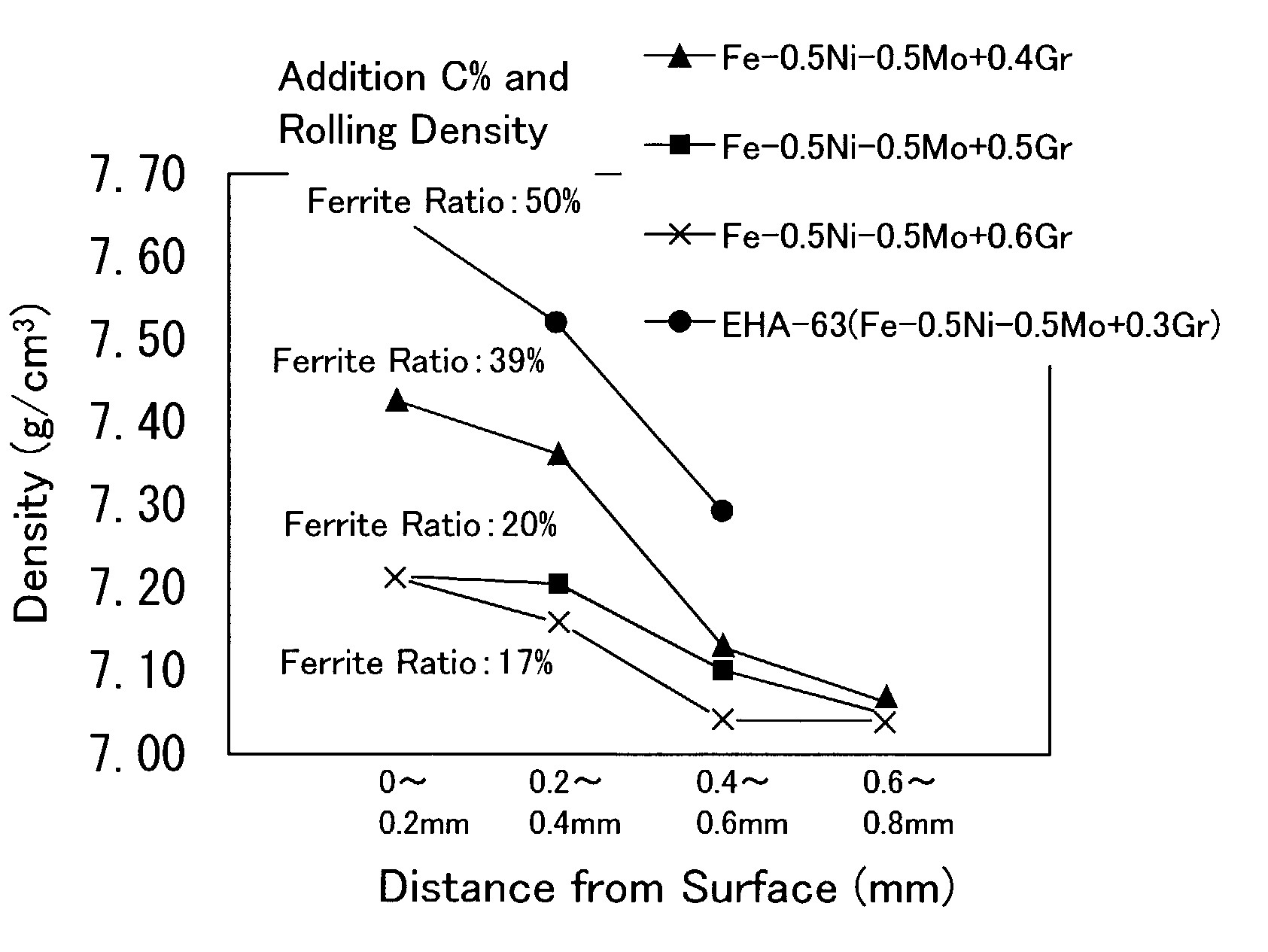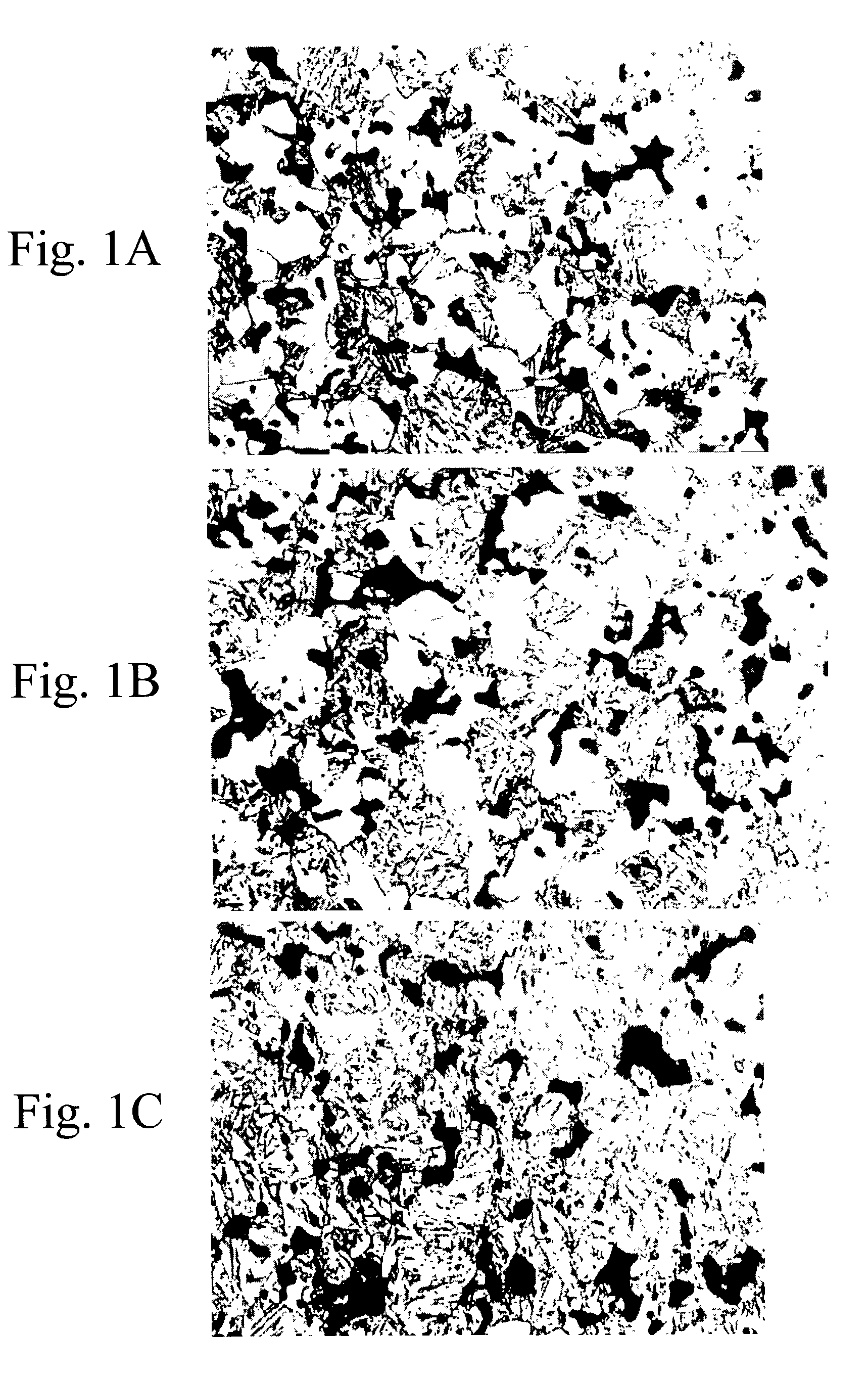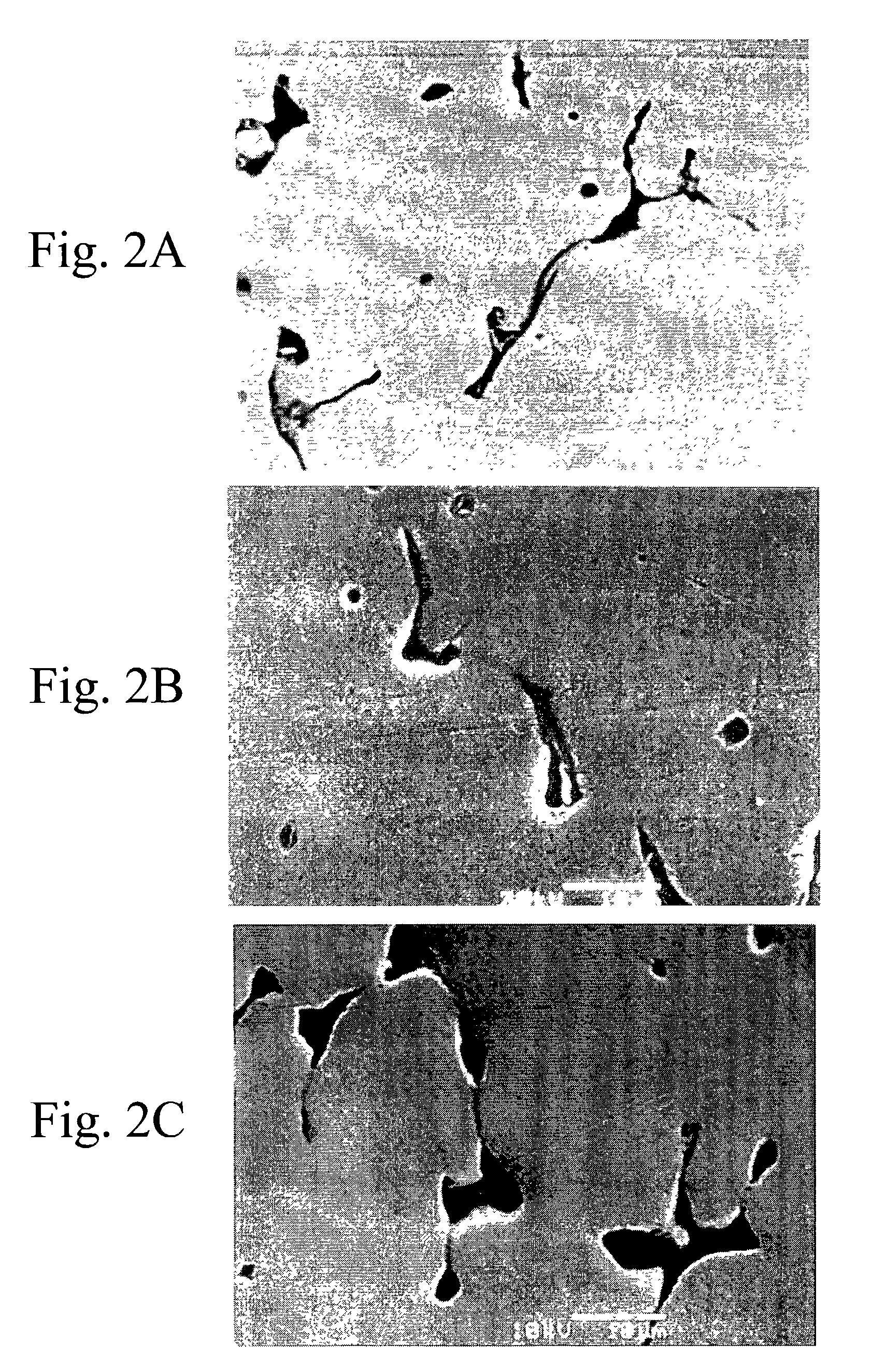Sintered sprocket
- Summary
- Abstract
- Description
- Claims
- Application Information
AI Technical Summary
Benefits of technology
Problems solved by technology
Method used
Image
Examples
Embodiment Construction
[0031] In the following, the present invention will be explained in detail by referring to examples according to the present invention.
[0032] Powder consisting of Ni powder at 0.5% by volume, Mo powder at 0.5% by volume, graphite powder at 0.3 to 0.6% by volume, and iron powder as the balance, was compacted in a sprocket shape and was then sintered in air at 1150.+-.20.degree. C. for 60 minutes. Next, the sprocket was rolled to a rolling width of 0.09 mm, using a rolling apparatus shown in FIG. 3. In the figures, reference numeral 1 indicates a sprocket, and reference numerals 2 indicate dies. Gear teeth to be equal to those of the sprocket 1 were formed at a periphery of the die 2A. Tooth surfaces of the sprocket were pressed by sandwiching the sprocket 1 between two dies 2 and rotating the dies 2, and the gear teeth were thereby compacted in a specific tooth shape. The term "rolling width" refers to a pressing amount in a perpendicular direction to the tooth surface of the sprocke...
PUM
| Property | Measurement | Unit |
|---|---|---|
| Percent by mass | aaaaa | aaaaa |
| Percent by mass | aaaaa | aaaaa |
| Fraction | aaaaa | aaaaa |
Abstract
Description
Claims
Application Information
 Login to View More
Login to View More - R&D
- Intellectual Property
- Life Sciences
- Materials
- Tech Scout
- Unparalleled Data Quality
- Higher Quality Content
- 60% Fewer Hallucinations
Browse by: Latest US Patents, China's latest patents, Technical Efficacy Thesaurus, Application Domain, Technology Topic, Popular Technical Reports.
© 2025 PatSnap. All rights reserved.Legal|Privacy policy|Modern Slavery Act Transparency Statement|Sitemap|About US| Contact US: help@patsnap.com



